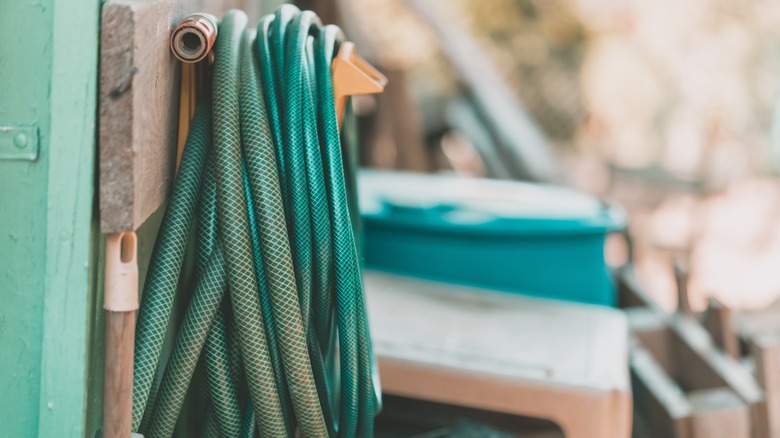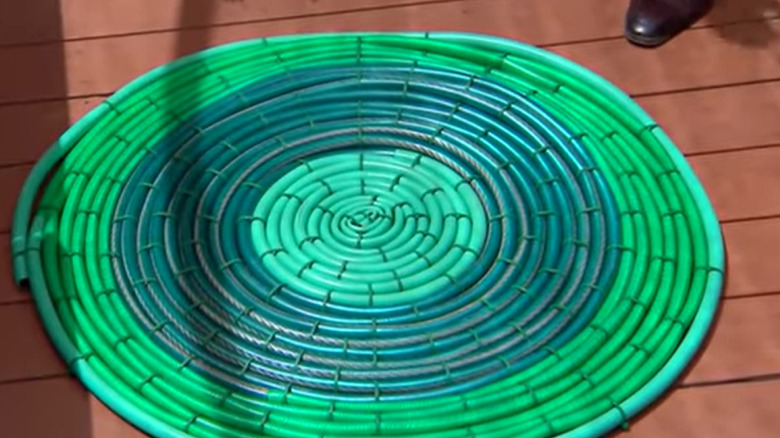Create An Outdoor Rug Out Of Old Garden Hoses
What do you do with old garden hoses that have small leaks and therefore can't be used for their original purpose anymore? If you happen to have a few that are just taking up space, you can use them to create a sturdy, easy-to-clean outdoor rug for your patio. By creating this rug, you're not only recycling materials that are still useful; you're also crafting the type of patio rug that's somewhat hard to find. It's inexpensive since you might already have the materials on hand, and you won't find another identical style or color scheme.
Additionally, it won't tear easily and doesn't require vacuuming or scrubbing to remove dirt and dust, and considering its thickness and weight, you won't have any concerns about the rug being blown out of place by heavy winds. Moreover, the finished result closely resembles a stylish braided rug with multiple shades. So without further ado, here are the steps for creating a rug out of your garden hoses.
How to create the rug
You can start by gathering the hoses (with the nozzles cut off) and some zip ties. Next, take the end of one hose and fold it down a couple of inches. Then take a zip tie, attach the end of the folded part to the hose, and then tighten it until the folded part is secure. From there, wrap a second zip tie around the folded part just under the crease. After that, you'll need to tie a third zip tie in the middle of the folded part between the first two ties. Now you have the middle of your rug.
For the next step, wrap the hose around the center. Slip a zip tie through the middle of the center part and attach one side of the hose's section to the center and continue wrapping. Then add another zip to the opposite side. At this point, you should have one zip tie on each side of what appears to be a small oval. If needed, add another zip tie to the top of the oval and another on the bottom.
Basically, you'll keep wrapping the hose tightly around the center while adding zip ties through the slits on each side to secure each section. When adding a different hose, you'll need to squeeze its end to fit it inside the opening of the coil's end. After that, you can continue to wrap that hose around the other while securing it with the zip ties.
Some extra tips
Once completed, you can flip the rug over to where the ends of the zip ties are located underneath it. One advantage to creating this rug, other than using an eco-friendly process, is that you'll have a low-maintenance rug that can stand up to the outdoor elements. Plus, this rug would be easy to clean by simply spraying it with the water hose. Furthermore, you won't have to worry about the rug slipping since the rubber hoses provide enough traction to stay in place.
One tip to keep in mind is if during the process you can't tuck one end of the hose into the other, you can cut a small piece of a wooden dowel or some other small, narrow cylinder to connect the two hoses together. You can use waterproof glue to secure those parts, but it may not be needed if it looks like neither of the hoses would slip. Also, if those pointed ends of the zip ties cause some concern, you can always cut them off with pliers. For some creative variations in color, you can use different colors of zip ties in a pattern as well as hoses in different shades of green.

